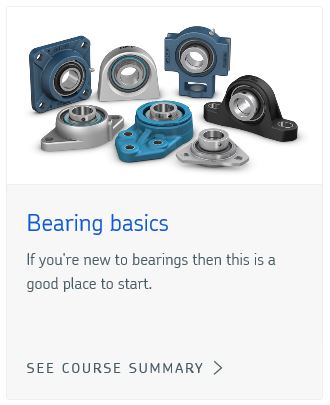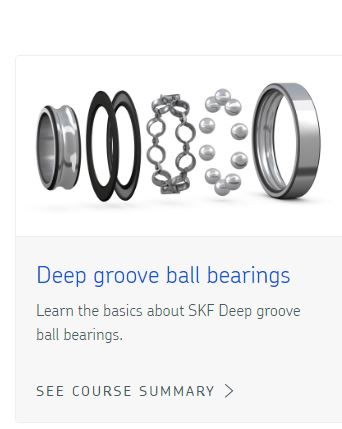WE201 Bearing Technology and Maintenance
Learn best practices in bearing applications, principles of mounting and dismounting rolling bearings, housings and seals, using the correct fitting and removal tools and techniques including clearance reduction, axial drive up, hydraulic nut withdrawal sleeve and oil injection methods. Through this training course, SKF aims to encourage safe and skillful maintenance practices that can help extend bearing service life, reduce machine downtime and minimize unplanned maintenance activities.
Description
Basics of Bearings and Their Applications
- Rolling bearing theory
- Anti-friction bearing types and applications
- Bearing types and applications
- Meaning of “L 10 Life” and “Service Life”
- Application of fits and tolerances
Fundamentals of Lubrication
- How bearing lubrication works
- The importance of selecting the proper lubricant for an application
- Maximise bearing life through understanding of proper lubricating principles and functions
- How much and how often to lubricate rolling bearings
Seal Types and Application
- Contact seals, Non-contact seals
- Housing seal types
Principles of Mounting and Dismounting Bearings
- Cylindrical seating
- Tapered seating
- Adapter and withdrawal sleeves
- Cold and hot mounting and dismounting
- Mounting and dismounting using oil injection
- Principles of mounting plain bearings
Introduction to Bearing Failures and Their Causes
- Identify and interpret actual bearing failures
Practical Mounting and Dismounting of Bearings
- Preparation for mounting and dismounting
- Checking the components
- Mounting and dismounting tools
- “Hands on” exercises
Who Should Attend
Attendees will learn the skills necessary to successfully understand the use of rolling element bearings in rotating machinery.
Maintenance Fitters and Technicians
- learn how to identify rolling element bearings
- understand how to fit and remove bearings using the correct tools and techniques
- understand basic lubrication & damage analysis
Reliability & Engineering
- selection of the right bearing, lubricant and sealing arrangements for specific applications
- appropriate dimension and tolerance for housings and shaft
- incorporate appropriate bearing mounting and dismounting requirements into the design and work instructions
- improve the service life of rolling element bearings
Post-Course Reference
On course completion, all students will receive access to below reference material in order to advance their learning in this subject.
On Demand Webinar:
- Bearing Selection Process
- Software Tools for Bearing Applications
- Bearing Assist App
Reference Material:
- Bearing Maintenance Handbook

